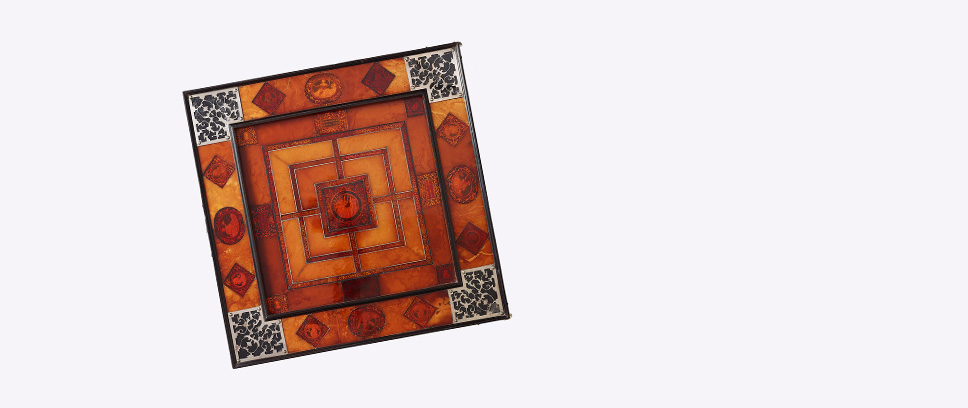
King in Check – The amber board game cassette
Interview with Dr Wolfgang Cortjaens and Dr Thomas Weißbrich | 14 February 2024
“Playful Alliances” is the title of an interdisciplinary conference taking place from 29 February to 1 March 2024 in the Deutsches Historisches Museum. It focuses on an amber board game cassette or box made in Königsberg in 1607 which the DHM acquired in 2021. As a preview to the diverse programme of lectures, the two concept developers and organisers of the event, Dr Wolfgang Cortjaens, head of the Applied Art and Graphics Collection, and Dr Thomas Weißbrich, head of the Militaria Collection, provide insight into the topic in this blog post and build a bridge between the two different collection sections that at first glance seem to have little to do with one another.
What is meant by the term “board game cassette”? What is special about it?
In the late 15th century a new kind of board game was created: the “Three Game Box”. In this cassette it was possible to store several different games (usually merels or the game of goose, tric-trac/backgammon and chess) as well as the respective figures and/or counters; it was a closable case that could be easily transported. In the course of time the design of such cassettes became increasingly versatile and the material more precious. Of art-historical interest is that these developments came about at the same time – from around the 1560s – that amber began to be increasingly used. Amber, a fascinating substance due to its transparency and lucidity and the added mystery of its origin in the sea, became one of the most treasured materials for luxury goods – and now board games as well. New cutting techniques, such as those found in consummate perfection in the micro-carving and coloured inlays of the DHM’s new object, were developed.
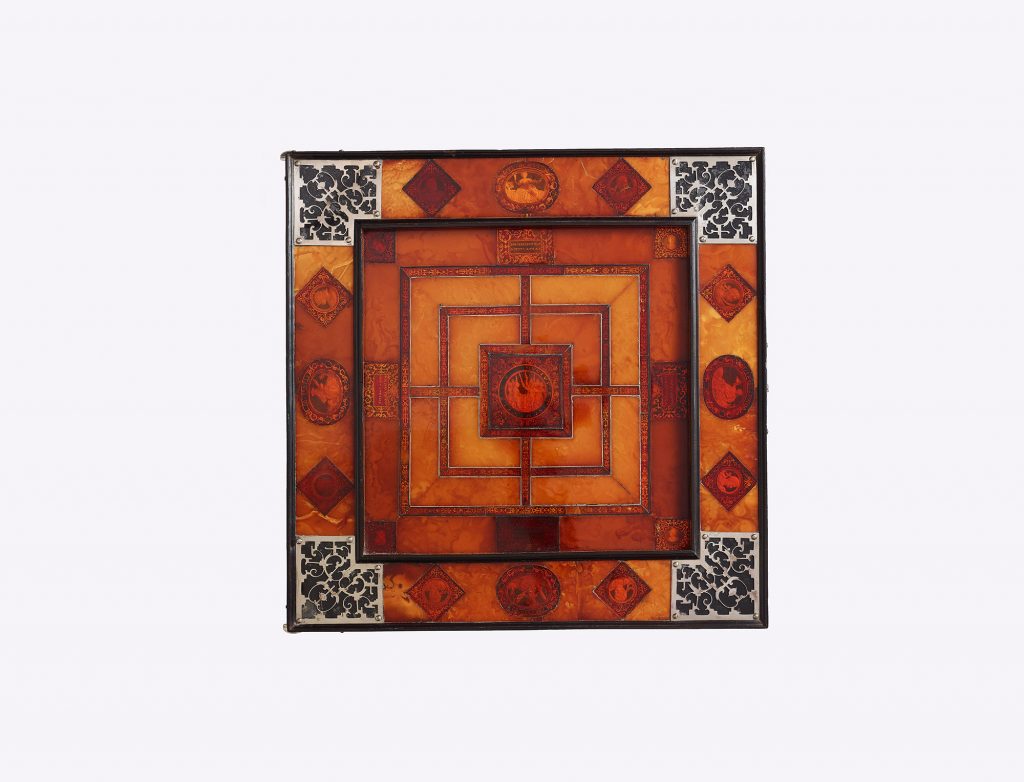
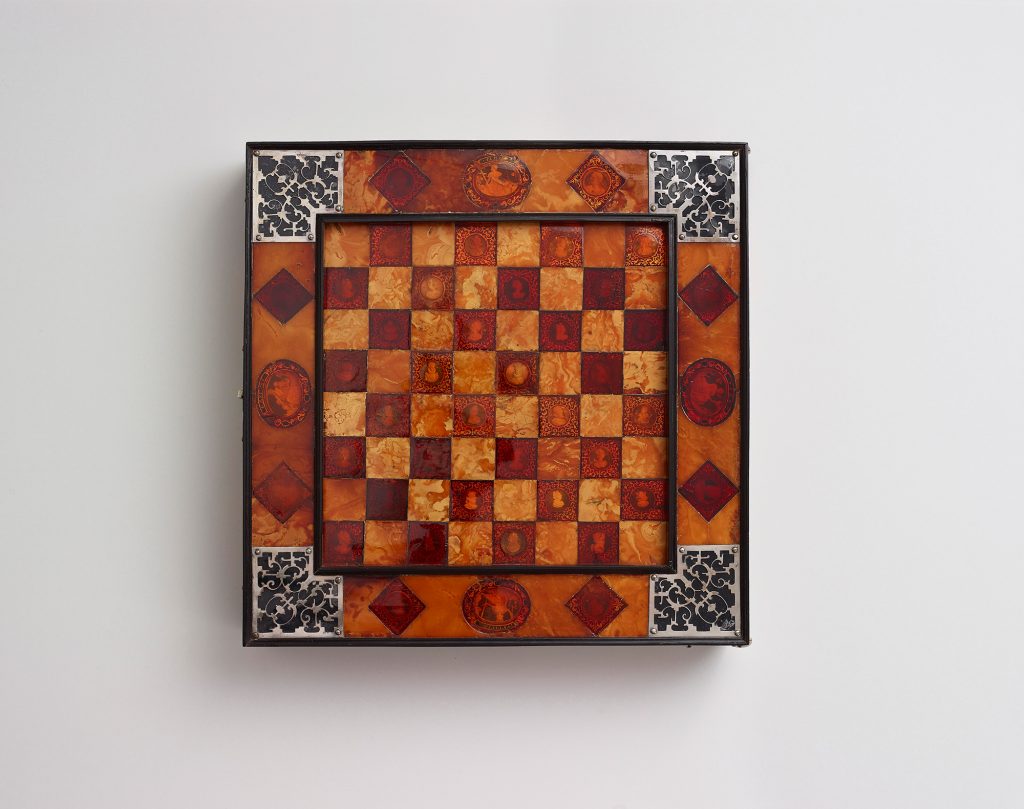
Both external sides of the amber board game, Photo:© DHM Berlin /Indra Desnica
Where does the cassette come from?
Königsberg was a hub of the amber trade. Duke Albrecht of Brandenburg, the owner of the so-called amber monopoly, deliberately promoted the settlement of talented artisans and amber turners near his court, among them the “court amber turner” Hans Klingenberg, who probably fashioned the Berlin board game cassette. The recent acquisition is among a very small number of comparable pieces of such superior quality. Two of these similarly outstanding objects are found in the Hessen Kassel Heritage and the Landesmuseum Württemberg in Stuttgart; both pieces will be presented in detail at the conference by the custodians of those collections.
What is known about the origin of the new acquisition?
The provenance of the object is both distinguished and fascinating, ranging back to the time of its creation. The preciousness and rarity of such luxury items suggests that the board game cassette was probably a diplomatic gift from the Duchy of Prussia to the House of Stuart. Its first owner was presumably James I (1566–1625), King of England and Ireland, although this has not been verified through sources. The first written mention of the cassette is found in the posthumous inventory of King Charles I, who was executed in 1649 (“A Paire of Tables of White and Yellowe Amber garnished with silver” with 13 figures). Charles I gave the game board to his advisor William Juxon, First Lord of the Admiralty and Lord High Treasurer, later Archbishop of Canterbury. Through Juxon’s heirs the cassette came down to the Lords of Hesketh of Rufford Hall – as is listed in the inventory register of 1855 – and remained in the family’s possession until the beginning of the 21st century. From 2008 to 2010 it was displayed in the Victoria & Albert Museum in London, before being purchased for the DHM on the art market.
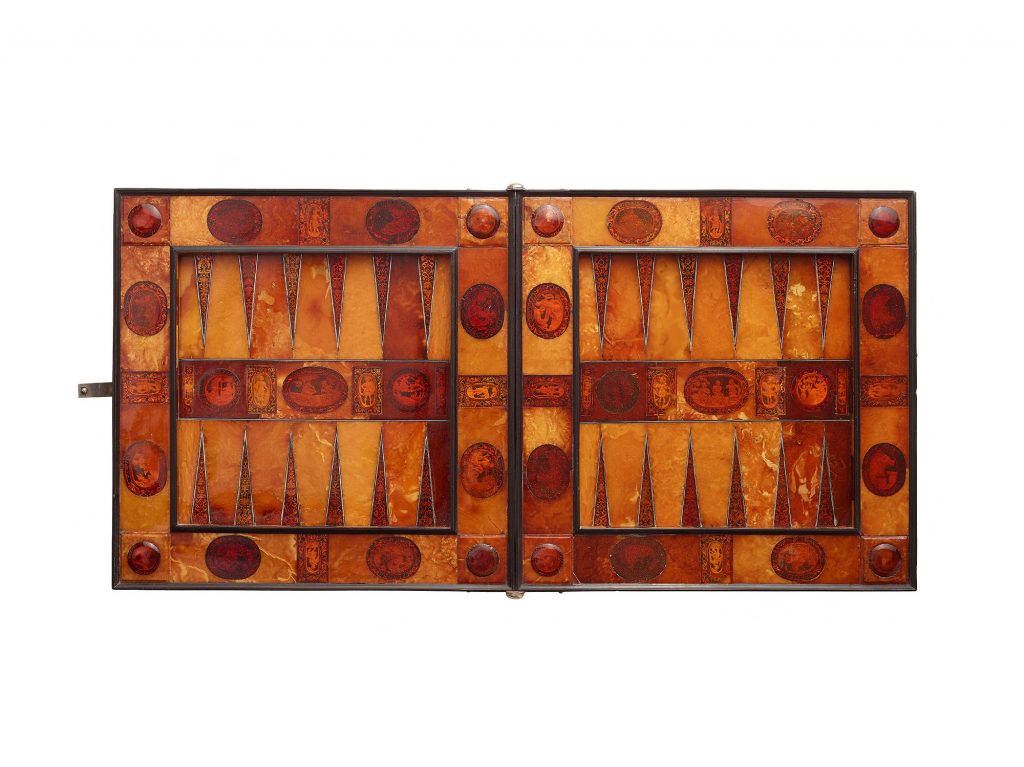
What topics can be connected with the object?
As a luxury item par excellence, the cassette can be seen in relation to the 16th century phenomenon of the “cabinets of curiosities”, which were representative, usually princely display collections containing such objects as precious artefacts, scientific instruments, fossils, exotica and naturalia, like the “Coco de mer” recently described in our blog or the engraved ostrich egg from the early 17th century, a recent acquisition for the Applied Art Collection that shows motifs from the “New World”. The curiosities were displayed according to certain criteria. The cabinets were open only to a select circle of people and served primarily as representation for the owner.
Board game cassettes of this kind are closely connected with the area of early modern game culture. Chess was an important element, but by no means the only one. Other board and card games as well as so-called parlour games were popular at the time. It is unlikely that the DHM’s board game cassette was used very often – there are almost no scratches or defects on its surface.
To mention a third connection, the cassette is an example of diplomatic presents: valuable objects in courtly culture that sovereigns often gave to other sovereigns to express sympathy, to strengthen alliances, or to underscore a request by sending a gift.
Why is the board game cassette interesting from the point of view of the Militaria Collection?
The connection with the Militaria Collection, i.e. with weapons, armour, uniforms and flags, is indirect. From early times chess was associated with the topics of “battle” and “war”. This connection is illustrated in the board game cassette by the elements on the board that depict ancient warriors or Mars, the Roman god of war. (Ill. 1 and 2)
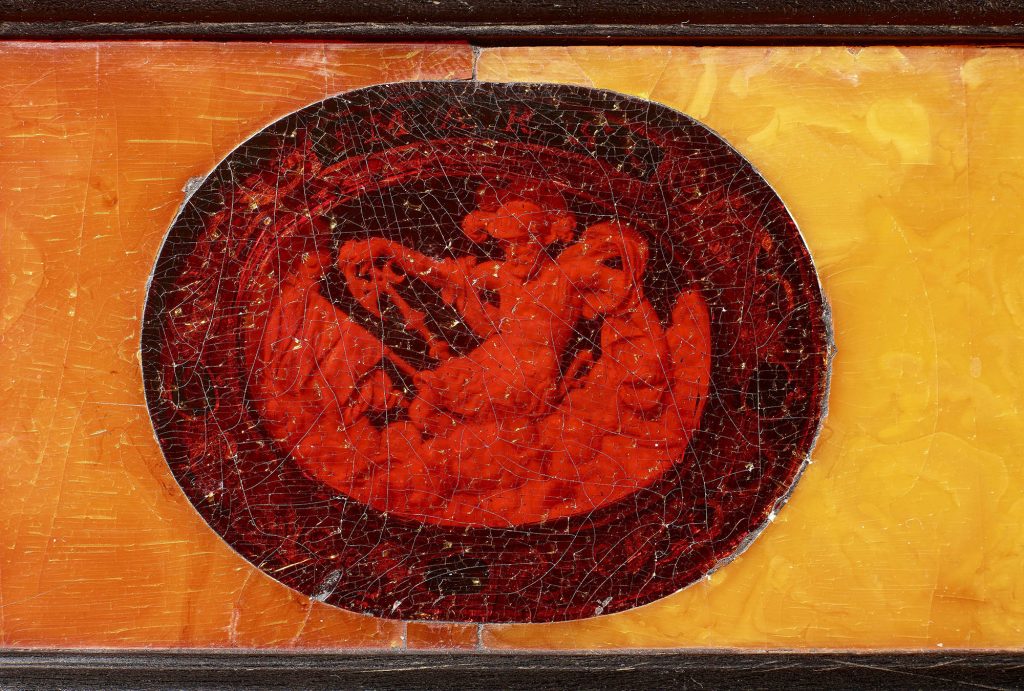
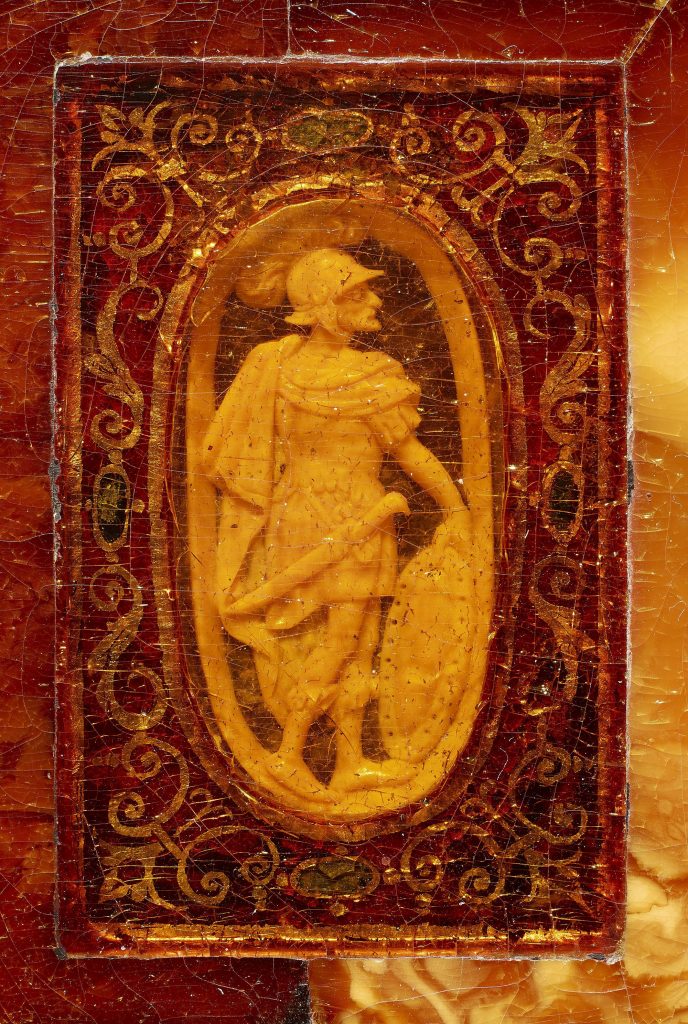
The era when the cassette was made was marked by a major military reform that spread from the Netherlands to all parts of Europe. It went hand in hand with new strategic and tactical ideas about how the troops were arranged and moved on the field. Chess could, in a very general sense, train the intellectual capacity of the players in such matters as the evaluation of positions and interactions as well as (dangerous) situations. It would, of course, be wrong to speak of a direct application of the game to military strategy.
Since the Napoleonic Wars, around 1800, there were graphic depictions available to the public that illustrated the wars through the game of chess, often showing the moment of “checkmate”. This was supposed to ascribe careful reasoning and planning on the part of the winner, while the loser was shown as hamstringed. This motif has become established and can still be found to illustrate current conflicts.
|
|
Dr Wolfgang CortjaensWolfgang Cortjaens is head of the Applied Arts and Graphics collection of the DHM. |
|
|
Dr Thomas WeißbrichThomas Weißbrich is head of the DHM militaria collection. |

